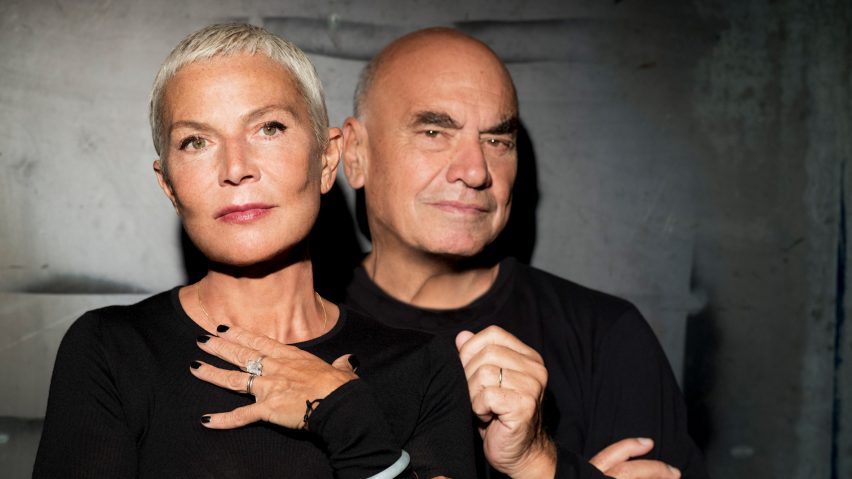The founders of Italian practice Studio Fuksas have spoken to the Italian press about their designs for The Line mega city in Saudi Arabia, which are on display during the Venice Architecture Biennale.
Speaking to Italian newspaper La Repubblica in a rare interview by an architect working on the project, Massimiliano and Doriana Fuksas said that the project aligned with the aims of the Venice Architecture Biennale they curated in 2000.
"It's like an urbanisation project that does not touch the poetry of the desert," said Massimiliano Fuksas.
"After all, the architecture biennale that we curated in 2000 was entitled: Less Aesthetics More Ethics. A motto that is now in the spirit of our time."
Part of the controversial Neom development in northwestern Saudi Arabia, The Line is planned as a 170-kilometre-long mega city that will house nine million people. Studio Fuksas' designs are included in an exhibition on Neom titled Zero Gravity Urbanism that is currently on display in Venice.
Massimiliano Fuksas revealed that the studio is working on three modules for the city, which will consist of a pair of parallel 500-metre-high skyscrapers.
"You shouldn't think of the concept of tower or skyscraper in the classic sense," Doriana Fuksas told La Repubblica. "In our modules all the urban functions are present and integrated: homes, green areas, public spaces of various types."
Although few details about the city have been revealed, one of its key features will be its reflective outer walls.
In the interview, Massimiliano Fuksas appeared to reveal that the walls would be built from solar panels.
"The walls have a double function," said Massimiliano Fuksas.
"Since the energy must be 100 per cent renewable, the walls perform the function of producing this energy, and of reflecting the surrounding landscape, the desert landscape."
Massimiliano and Doriana Fuksas explained that the design for their section of The Line was an evolution of ideas developed at the studio's Shenzhen airport terminal, Rome convention centre and Fiera di Milano, which is home of the Salone del Mobile furniture fair.
Their design aims to be a departure from geometric shapes that determine the form of the majority of buildings.
"Architecture has always relied on Euclidean geometry," said Doriana Fuksas. "Instead, in the last decades, we have studied something else: quantum mechanics, fractals and algorithms. All concepts that contribute to design today."
Alongside Studio Fuksas, Adjaye Associates, Delugan Meissl Associated Architects and Morphosis presented their designs for The Line at the exhibition, which was named Zero Gravity Urbanism. Also at the exhibition, Danish studio BIG was named as the masterplanner of the Oxagon floating port city, which is also part of the Neom development.
The Neom project is one of the largest and most controversial in the world. We recently published a guide to the development, which explains what the project is, the studios involved and why it is controversial.
It has been criticised on both sustainability and human rights grounds, with human rights organisation ALQST reporting that three members of the Huwaitat tribe, who are believed to have criticised displacements connected to Neom, have been sentenced to death.

